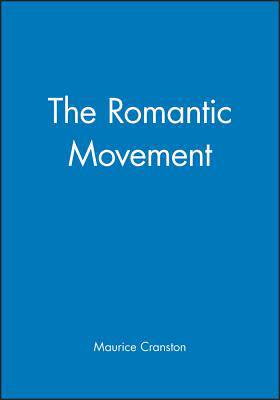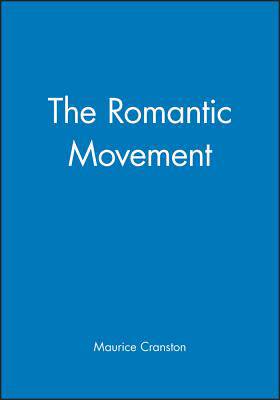
Je cadeautjes zeker op tijd in huis hebben voor de feestdagen? Kom langs in onze winkels en vind het perfecte geschenk!
- Afhalen na 1 uur in een winkel met voorraad
- Gratis thuislevering in België vanaf € 30
- Ruim aanbod met 7 miljoen producten
Je cadeautjes zeker op tijd in huis hebben voor de feestdagen? Kom langs in onze winkels en vind het perfecte geschenk!
- Afhalen na 1 uur in een winkel met voorraad
- Gratis thuislevering in België vanaf € 30
- Ruim aanbod met 7 miljoen producten
Zoeken
Omschrijving
The Romantic Movement in Europe was both a revolt and a revival, a philosophy of life as well as of art. In the earliest expressions of romantic theory by Rousseau and Diderot, it is seen as a revolt against rationalism. In Great Britain and Italy it appears as a revolt against classicism, in Spain as a revival of the tradition of the Moorish courts, and in Germany, where it excited the greatest enthusiasm, as both a revolt against rationalism and a revival of the Gothic and Germanic.
Despite the differences of aim and emphasis across Europe, Professor Cranston argues that romaticism was a European phenomenon, as universal as the Renaissance. He isolates its common features - liberty, introspection, and the importance of love; truth in the expression of feeling as much as of thought; nature seen as an object of devotion rather than scientific study; a tolerance of the grotesque coupled with an interest in the exotic, the primitive and the medieval; a concern for the value of intuition over ratiocination; and a preference for audacity over prudence.
The Romantic Movement is part of the common European heritage, and its influence is by no means at an end. The book is the first to describe its philosophy, history, and cultural and artistic manifestations, and the ways these varied across the countries of Europe.
Despite the differences of aim and emphasis across Europe, Professor Cranston argues that romaticism was a European phenomenon, as universal as the Renaissance. He isolates its common features - liberty, introspection, and the importance of love; truth in the expression of feeling as much as of thought; nature seen as an object of devotion rather than scientific study; a tolerance of the grotesque coupled with an interest in the exotic, the primitive and the medieval; a concern for the value of intuition over ratiocination; and a preference for audacity over prudence.
The Romantic Movement is part of the common European heritage, and its influence is by no means at an end. The book is the first to describe its philosophy, history, and cultural and artistic manifestations, and the ways these varied across the countries of Europe.
Specificaties
Betrokkenen
- Auteur(s):
- Uitgeverij:
Inhoud
- Aantal bladzijden:
- 176
- Taal:
- Engels
- Reeks:
Eigenschappen
- Productcode (EAN):
- 9780631194712
- Verschijningsdatum:
- 20/09/1994
- Uitvoering:
- Paperback
- Formaat:
- Trade paperback (VS)
- Afmetingen:
- 151 mm x 229 mm
- Gewicht:
- 254 g

Alleen bij Standaard Boekhandel
+ 172 punten op je klantenkaart van Standaard Boekhandel
Beoordelingen
We publiceren alleen reviews die voldoen aan de voorwaarden voor reviews. Bekijk onze voorwaarden voor reviews.









